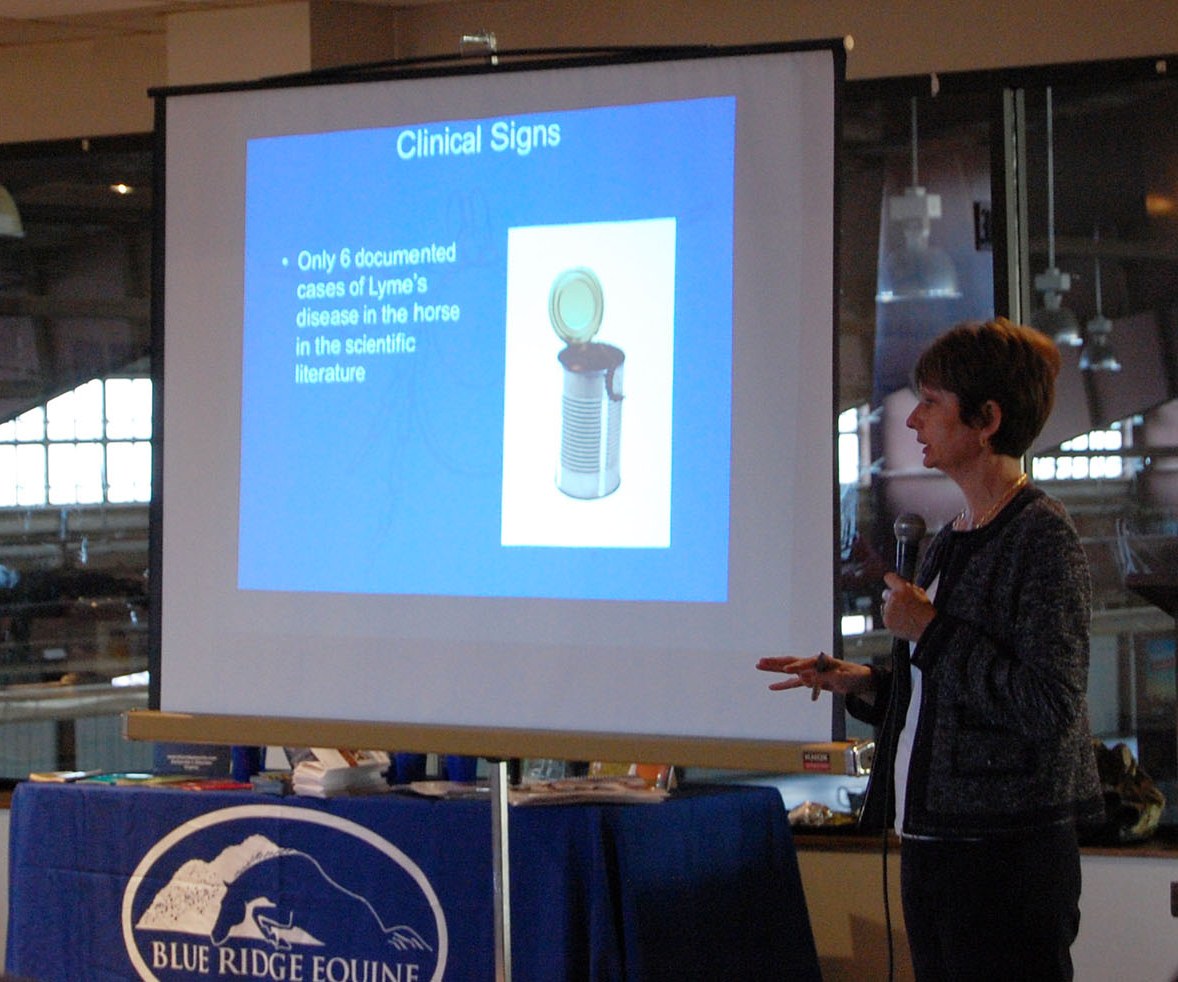Equine Lyme Disease
The disease is caused by a bacteria called Borrelia burgdorferi. It is carried by the tiny deer or black-legged tick and can be transmitted throughout the year. It is difficult to be certain what the clinical signs of the disease are in the horse. When ponies were experimentally infected with the organism, none of them developed clinical signs even though the organism was recovered from the ponies at necropsy. There have only been six documented cases of Lyme Disease in the horse that have been reported in the scientific literature.

Lyme test results are based on an antibody response. If the horse is infected with the organism, it will develop an antibody response. However, 40-50% of all horses in the mid-atlantic region test positive (75% in New England, where Lyme Disease was first reported) even though they have no clinical signs nor will they develop clinical signs in the future. They have been exposed, develop an antibody response but do not get sick. So a positive test does not mean that the clinical signs the horse is experiencing are definitely caused by the Borrelia organism.
So how do we know if a horse is infected with Lyme Disease? For lack of a better method, veterinarians have adopted the rules for humans the CDC uses:
* the horse must have compatible clinical signs
* all other potential diseases must be ruled out
* the horse must have a positive test
* if the horse dies, it must have compatible pathology
Considering the results from the first treatment experiment, one may wonder why not just treat all suspected cases with IV Tetracycline? Several reasons: it’s expensive, as it requires a daily visit from the veterinarian for 30 days, horses can collapse if it is giving too quickly, it’s very irritating if it gets outside the vein, it can cause GI upset and renal failure. As you can see, it’s not a treatment decision to be made lightly in a suspected case of Lyme Disease. If you or your veterinarian suspects Lyme’s Disease a discussion about the test and treatment options should follow. Today veterinarians use Monocycline (oral tetracycline) because it is given orally and rises to therapeutic levels in the blood stream of the horse. But there is no clinical evidence confirming if it actually works or how long it should be given.
As you can see, it’s frustrating for all of us that there is so much that is still unknown about Lyme Disease: its prevalence, definitive clinical signs, how to diagnose it and best treatment method. Until more research dollars are invested in further research, the only things we know for sure are the organism that causes it and that tetracycline has some effect on it.

